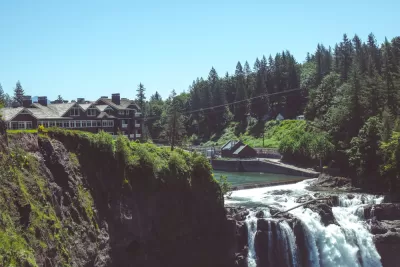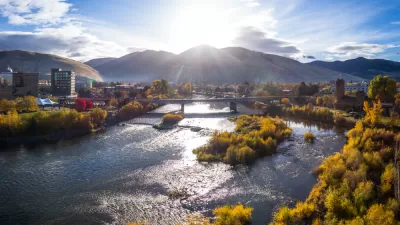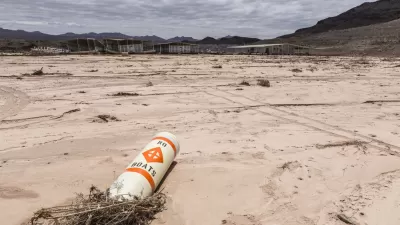The Seattle region would seem to have plenty of water to go around. That doesn't mean there aren't environmental consequences for more development.

"[E]ven in rainy, water-abundant Seattle, the region’s astronomical growth has given rise to new conflicts over water rights for people and salmon," according to an article and on-air report by Joshua McNichols.
The case study for the pressure between sprawl and water supply is set along the Snoqualmie River, found about 30 miles outside of Seattle and in the opening credits of the television show Twin Peaks. The city of Snoqualmie has been growing quickly, but upstream the city of North Bend, where Twin Peaks was mostly filmed, is stuck in the past due to a 1999 housing construction moratorium, implemented when the city got caught drawing more water than permitted from wells.
Now, developers have proposed a 212-unit development in North Bend, but "local environmental activists are demanding to know whether that building would put new strain on an already-overburdened waterway."
According to North Bend Mayor Ken Hearing, the development will bring workers, many of whom now commute from much farther south in King County, closer to North Bend's "struggling" commercial core. Mayor Hearing is also motivated to generate revenue from development that North Bend lacks, but other cities nearby have managed to collect on for years.
Jean Buckner represents the Friends of the Snoqualmie Trail and River, the environmental group opposing the apartment development. According to McNichols, "Buckner said she’s not against growth in North Bend. She just wants to see the city demonstrate that the river can withstand this new development."
FULL STORY: Water fuels Seattle’s growth. But in North Bend, activists say water could be running out

Maui's Vacation Rental Debate Turns Ugly
Verbal attacks, misinformation campaigns and fistfights plague a high-stakes debate to convert thousands of vacation rentals into long-term housing.

Planetizen Federal Action Tracker
A weekly monitor of how Trump’s orders and actions are impacting planners and planning in America.

San Francisco Suspends Traffic Calming Amidst Record Deaths
Citing “a challenging fiscal landscape,” the city will cease the program on the heels of 42 traffic deaths, including 24 pedestrians.

Defunct Pittsburgh Power Plant to Become Residential Tower
A decommissioned steam heat plant will be redeveloped into almost 100 affordable housing units.

Trump Prompts Restructuring of Transportation Research Board in “Unprecedented Overreach”
The TRB has eliminated more than half of its committees including those focused on climate, equity, and cities.

Amtrak Rolls Out New Orleans to Alabama “Mardi Gras” Train
The new service will operate morning and evening departures between Mobile and New Orleans.
Urban Design for Planners 1: Software Tools
This six-course series explores essential urban design concepts using open source software and equips planners with the tools they need to participate fully in the urban design process.
Planning for Universal Design
Learn the tools for implementing Universal Design in planning regulations.
Heyer Gruel & Associates PA
JM Goldson LLC
Custer County Colorado
City of Camden Redevelopment Agency
City of Astoria
Transportation Research & Education Center (TREC) at Portland State University
Jefferson Parish Government
Camden Redevelopment Agency
City of Claremont





























